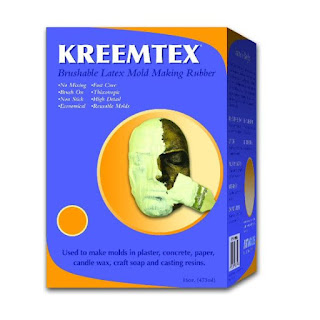Rediscovering Art Through Plaster Casting
Art has the remarkable ability to transcend time and connect us to the creative spirits of our ancestors. From ancient civilizations to contemporary artists, plaster casting remains a medium of choice for its versatility, durability, and the unique charm it adds to artistic creations. In this comprehensive guide, we will embark on a journey through the captivating world of this casting, focusing on the incredible properties and applications of Plaster of Paris bandages and Plaster bandages.
The Art of Plaster Casting:
It is often simply referred to as plasterwork, is an age-old art form that involves creating three-dimensional sculptures and molds using plaster materials. It is a technique that has been practiced for centuries, dating back to ancient Egypt and Greece. Over the years, it has evolved and diversified, finding its place in various artistic disciplines, including sculpture, mask-making, and even medical applications.
It starts with the selection of the right plaster material, and Plaster of Paris stands out as one of the most widely used and beloved choices. Its popularity is attributed to its easy workability and ability to capture fine details.
Unveiling the Magic of Plaster of Paris:
At the heart of casting lies the versatile and enchanting material known as Plaster of Paris. Contrary to what the name suggests, Plaster of Paris has roots in Montmartre, a district in Paris, France, but its use has spread far beyond the city's borders.
What makes Plaster of Paris truly magical is its unique properties. It is a white powder that, when mixed with water, forms a paste that quickly hardens into a solid mass. This rapid setting time makes it ideal for creating molds and casts with intricate details. Whether you're crafting sculptures, masks, or relief panels, Plaster of Paris delivers remarkable results.
Crafting with Plaster Bandages:
Plaster bandages are another indispensable tool in the world of casting. These are gauze-like strips coated with plaster. They are known for their flexibility and convenience, making them a popular choice for artists, medical professionals, and DIY enthusiasts.
One of the key advantages of plaster bandages is their ease of use. They can be quickly immersed in water, and after a brief soaking, they become pliable and ready for application. Artists can use them to create sturdy support shells for sculptures and masks, or even for making life casts.
Step-by-Step Guide:
For those eager to dive into the world of casting, here's a simplified step-by-step guide to creating your first plaster cast:
- Prepare Your Workspace: Lay out all your materials, including Plaster of Paris, water, mixing containers, and your chosen mold or object.
- Mix the Plaster: Gradually add water to Plaster of Paris until you achieve a creamy consistency. Be mindful of the setting time – Plaster of Paris can harden quickly.
- Apply the Plaster: Apply the plaster mixture to your chosen mold or object. Make sure to press it into all the details.
- Remove Air Bubbles: Tap the mold gently to release any air bubbles trapped in the plaster.
- Let It Set: Allow the plaster to set. The time required can vary depending on the thickness of the plaster and the ambient temperature.
- Demold: Once the plaster is completely set, carefully remove it from the mold.
- Finishing Touches: Sand, paint, or decorate your plaster cast as desired.
Remember, practice makes perfect, so don't be discouraged if your first attempts aren't flawless. It is both an art and a craft, and proficiency comes with experience.
Tips and Tricks for Perfect Casting:
To help you on your casting journey, here are some valuable tips and tricks:
- Measure Accurately: Ensure precise measurements when mixing Plaster of Paris and water. Use a scale if necessary.
- Work Quickly: Plaster of Paris sets rapidly, so have everything prepared and ready for casting before mixing.
- Mind the Temperature: Warmer temperatures can accelerate the setting time, so adjust your workflow accordingly.
- Safety First: Wear appropriate safety gear, including gloves and eye protection, especially when mixing and handling plaster materials.
- Experiment and Learn: Don't be afraid to experiment with different techniques and molds. Each project is an opportunity to learn and improve.
Exploring ArtMolds: Your One-Stop Shop:
As you embark on your casting journey, you'll need a trusted partner who can provide high-quality supplies and expert guidance. Look no further than ArtMolds! Our commitment to excellence and passion for the arts drive us to provide artists, educators, and DIY enthusiasts with top-notch casting materials, tools, and resources. Whether you're a beginner or an experienced artist, you'll find everything you need to bring your creative visions to life.
To explore our extensive range of products and access our wealth of knowledge, visit us at https://www.artmolds.com today. Join our community of artists and artisans who share your passion for plaster casting and creativity.
Conclusion:
In conclusion, plaster casting is a timeless art form that continues to enchant and inspire. Plasterof Paris bandages and Plaster bandages are the cornerstones of this craft, enabling artists to breathe life into their imaginations. Whether you're a seasoned artist or a novice looking to explore a new creative outlet, the world of casting welcomes you with open arms.
Are you ready to embark on your plaster casting adventure? Dive into the world of creativity and imagination with ArtMolds! Explore our high-quality casting supplies, step-by-step tutorials, and expert guidance today. Visit https://www.artmolds.com/ now to unleash your artistic potential! Your masterpiece awaits.










